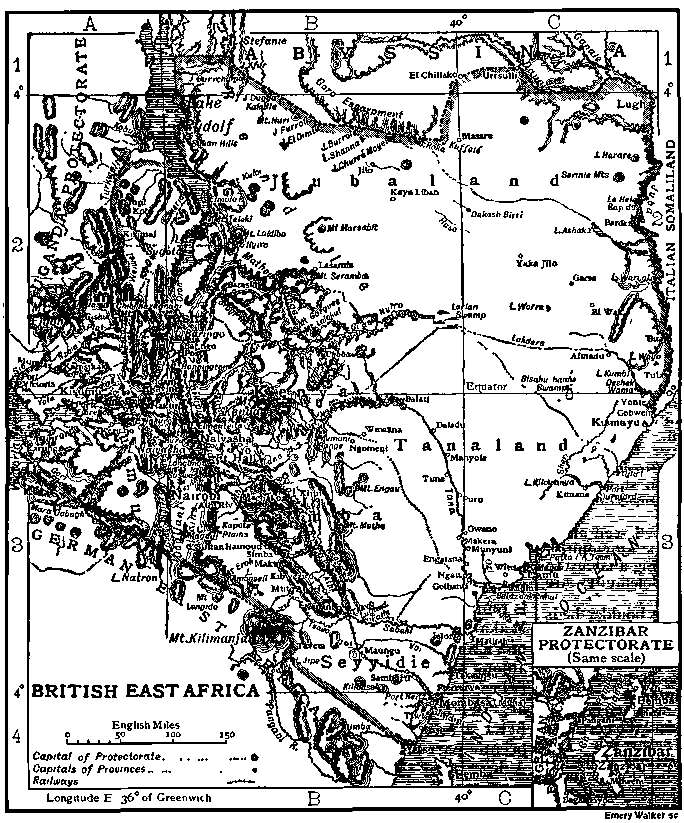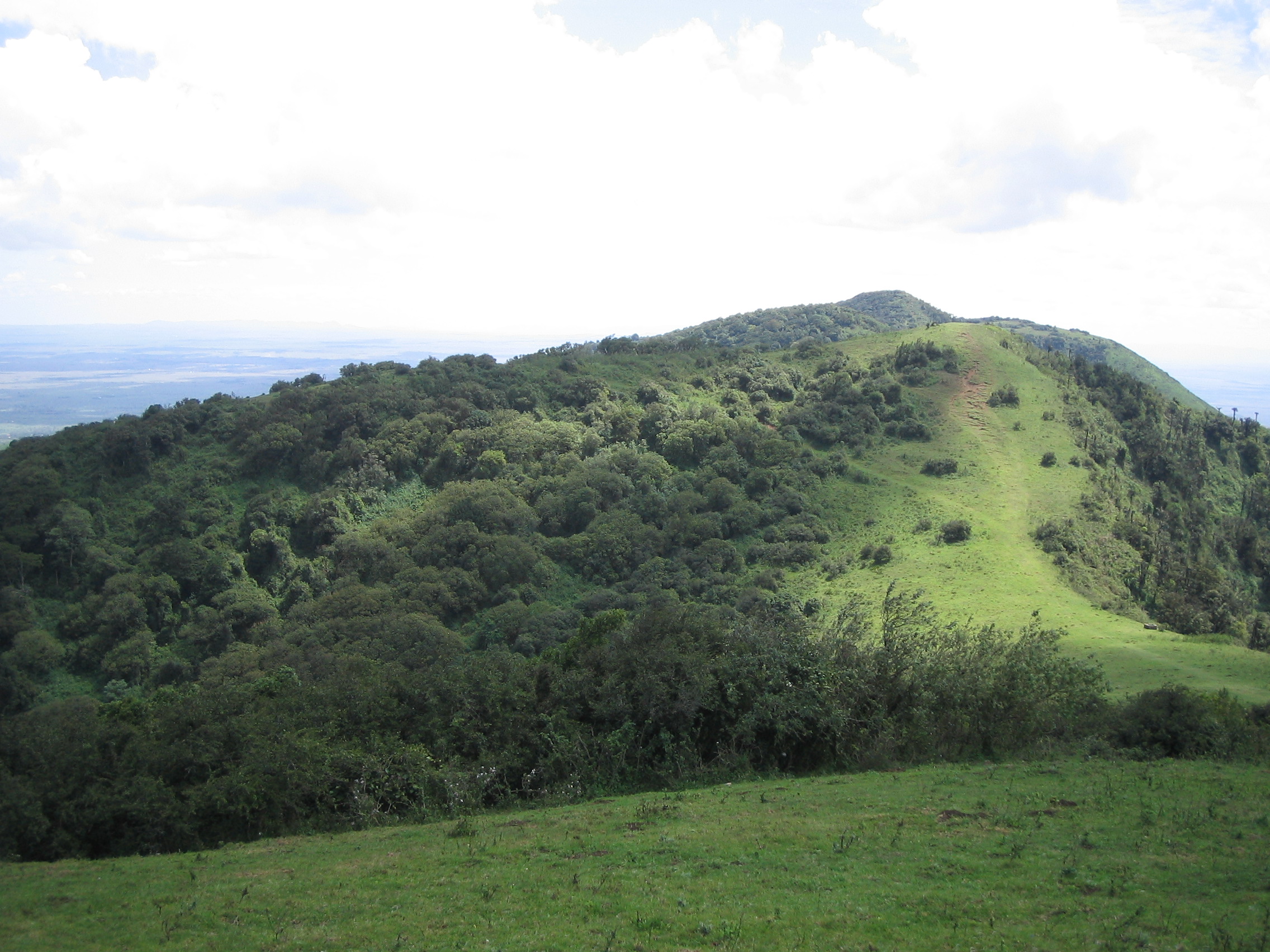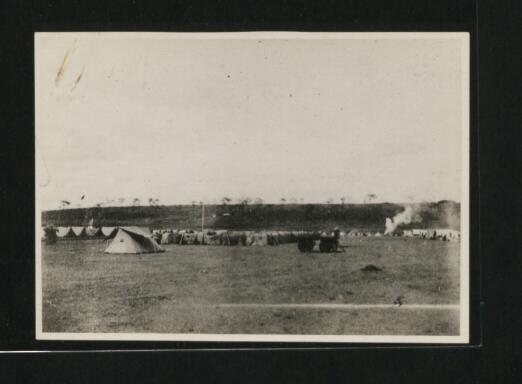|
Anglo-Maasai Treaty (1904)
The Masai Agreement of 1904 was a treaty signed between the British East Africa Protectorate government and leaders of the Maasai tribe between 10 and 15 August 1904. It is often wrongly called the Anglo-Maasai Agreement, but that was not its proper name.G.R. Sandford An Administrative and Political History of the Masai Reserve (1919) The Maasai tribe agreed to cede possession of pastures in the Central Rift Valley Rift Valley in return for exclusive rights to two territories, a southern reserve in Kajiado and a northern reserve in Laikipia."Judgment of the High Court of the East Africa Protectorate in the Case Brought by the Masai Tribe Against the Attorney-General of the Protectorate and Others." The American Journal of International Law 8, no. 2 (1914): 380-89. doi:10.2307/2187148. Background The Maasai acquired swathes of new land following success in the Iloikop Wars Wars of the 1870s, however this created problems as they were unable to successfully occupy their new terri ... [...More Info...] [...Related Items...] OR: [Wikipedia] [Google] [Baidu] |
East Africa Protectorate
East Africa Protectorate (also known as British East Africa) was an area in the African Great Lakes occupying roughly the same terrain as present-day Kenya from the Indian Ocean inland to the border with Uganda in the west. Controlled by Britain in the late 19th century, it grew out of British commercial interests in the area in the 1880s and remained a protectorate until 1920 when it became the Colony of Kenya, save for an independent coastal strip that became the Kenya Protectorate.Kenya Protectorate Order in Council, 1920 S.R.O. 1920 No. 2343, S.R.O. & S.I. Rev. VIII, 258, State Pp., Vol. 87 p. 968 Administration European missionaries began settling in the area from Mombasa to Mount Kilimanjaro in the 1840s, nominally under the protection of the Sultanate of Zanzibar. In 1886, the British government encouraged William Mackinnon, who already had an agreement with the Sultan and whose shipping company traded extensively in the African Great Lakes, to establish British infl ... [...More Info...] [...Related Items...] OR: [Wikipedia] [Google] [Baidu] |
Robert Arthur Briggs Chamberlain
Robert Arthur Briggs Chamberlain (31 January 1865 – 4 February 1948) was an early British settler in the East Africa Protectorate, now modern day Kenya. Early life and career Chamberlain was born in 1865 in Hull, Yorkshire, England. He was educated at Trent College in Nottingham and King's College, Cambridge. After leaving Cambridge he also studied at the University of Heidelberg and University of Tübingen in Germany. On his return to England, he studied law at Inner Temple. Chamberlain gave up a career in law, instead becoming a journalist with the Manchester Guardian and various London newspapers. Shortly before the Boer War broke out he went to South Africa as editor of the Johannesburg Star. His staunch opposition to the importation of Chinese labour for the Rand gold mines was so unpopular that he resigned his editorship of the Star. Following the war he became a vocal critic of Britain's handling of the war and the postwar physical hardship and psychological disc ... [...More Info...] [...Related Items...] OR: [Wikipedia] [Google] [Baidu] |
1904 Treaties
Nineteen or 19 may refer to: * 19 (number), the natural number following 18 and preceding 20 * one of the years 19 BC, AD 19, 1919, 2019 Films * ''19'' (film), a 2001 Japanese film * ''Nineteen'' (film), a 1987 science fiction film Music * 19 (band), a Japanese pop music duo Albums * ''19'' (Adele album), 2008 * ''19'', a 2003 album by Alsou * ''19'', a 2006 album by Evan Yo * ''19'', a 2018 album by MHD * ''19'', one half of the double album '' 63/19'' by Kool A.D. * '' Number Nineteen'', a 1971 album by American jazz pianist Mal Waldron * ''XIX'' (EP), a 2019 EP by 1the9 Songs * "19" (song), a 1985 song by British musician Paul Hardcastle. * "Nineteen", a song by Bad4Good from the 1992 album ''Refugee A refugee, conventionally speaking, is a displaced person who has crossed national borders and who cannot or is unwilling to return home due to well-founded fear of persecution. [...More Info...] [...Related Items...] OR: [Wikipedia] [Google] [Baidu] |
Treaties Of The Kingdom Of Great Britain
A treaty is a formal, legally binding written agreement between actors in international law. It is usually made by and between sovereign states, but can include international organizations, individuals, business entities, and other legal persons. A treaty may also be known as an international agreement, protocol, covenant, convention, pact, or exchange of letters, among other terms. However, only documents that are legally binding on the parties are considered treaties under international law. Treaties vary on the basis of obligations (the extent to which states are bound to the rules), precision (the extent to which the rules are unambiguous), and delegation (the extent to which third parties have authority to interpret, apply and make rules). Treaties are among the earliest manifestations of international relations, with the first known example being a border agreement between the Sumerian city-states of Lagash and Umma around 3100 BC. International agreements were used in ... [...More Info...] [...Related Items...] OR: [Wikipedia] [Google] [Baidu] |
History Of Kenya
A part of Eastern Africa, the territory of what is known as Kenya has seen human habitation since the beginning of the Lower Paleolithic. The Bantu expansion from a West African centre of dispersal reached the area by the 1st millennium AD. With the borders of the modern state at the crossroads of the Bantu, Nilo-Saharan and Afro-Asiatic ethno-linguistic areas of Africa, Kenya is a truly multi-ethnic state. The European and Arab presence in Mombasa dates to the Early Modern period, but European exploration of the interior began in the 19th century. The British Empire established the East Africa Protectorate in 1895, from 1920 known as the Kenya Colony. The independent Republic of Kenya was formed in 1963. It was ruled as a de facto one-party state by the Kenya African National Union (KANU), led by Jomo Kenyatta from 1963 to 1978. Kenyatta was succeeded by Daniel arap Moi, who ruled until 2002. Moi attempted to transform the ''de facto'' one-party status of Kenya into a ''de ... [...More Info...] [...Related Items...] OR: [Wikipedia] [Google] [Baidu] |
Kinangop
The Kinangop Plateau is a region in Kenya that lies between the Kenyan Rift Valley to the west and the Aberdare Range to the east. It takes its name from Kinangop Mountain, which rises in the Aberdares to the east. Geographical features The edge of the plateau is about in elevation. The plateau is relatively flat, sloping gradually upwards towards the foothills of the Aberdares. Rainfall is around annually, with more rainfall in the north than the south. Streams that feed the Malewa and Karati rivers have cut into the plateau. These rivers in turn flow into Lake Naivasha. Soils include ando‐luvic and verto‐luvic phaeozems. At one time the plateau was almost completely covered in tussocky grassland with very few trees. The stream valleys had many tussocky bogs. Colonial era After a railway was built, in the 1920s to 1940s the Wanjohi Valley became a British settler community that gained notoriety as the " Happy Valley set". The immigrants bought land at low cost to ra ... [...More Info...] [...Related Items...] OR: [Wikipedia] [Google] [Baidu] |
Ngong, Kenya
Ngong is a town near the Ngong Hills along the Great Rift Valley within Kajiado County, located in the southwest of Nairobi, in southern Kenya. The word ''"Ngong"'' is a Maasai word derived from the word "enkong'u' meaning "the 'eye' of water" or spring from where Rhinos came to drink water. Therefore, the original name of Ngong was "enchoro e'muny", meaning the spring of the rhinos. The Maasai also refer to a spring as the "eye" of water. A widespread false etymology is linked with the knuckle shape of the hills. The Ngong Hills, (known to the Maasai as 'Oloolaiser") from the eastside slopes, overlook the Nairobi National Park game reserve and, off to the north, the city of Nairobi. The Ngong Hills, from the westside slopes, overlook the Great Rift Valley dropping over 4,000 feet below, where nomadic Maasai live. Demographics , the population of Ngong Town consisting of Enchorro-Emunyi and Ngong Township locations is 25,866. The elevation of Ngong town is 1,961 meters in al ... [...More Info...] [...Related Items...] OR: [Wikipedia] [Google] [Baidu] |
Donald William Stewart
Captain Sir Donald William Stewart (1860 – 1 October 1905) was a British military officer and Commissioner of the East Africa Protectorate Early life He was born in London, the son of Sir Donald Stewart, 1st Baronet, a former Commander-in-Chief of the Indian Army. Career Stewart followed his father into the army and was commissioned with the Gordon Highlanders. He served in India and between 1879 and 1880 took part in the Second Anglo-Afghan War, during which he was severely injured.Wertheim, Stanley (1997), ''A Stephen Crane Encyclopedia'', Greenwood Publishing Group, p. 323. He went on to serve in the First Boer War in 1881 and the Mahdist War between 1884 and 1885. He left the army in 1888. In 1894 he was sent to Kumasi on the Gold Coast as a political agent. In 1896 he became the first British Resident in Kumasi, and served during the Second Ashanti Expedition. He remained on the Gold Coast until August 1904, when he was made Commissioner of the East Africa Pro ... [...More Info...] [...Related Items...] OR: [Wikipedia] [Google] [Baidu] |
List Of Colonial Governors And Administrators Of Kenya
This article contains a list of chairmen, administrators, commissioners and governors of British Kenya Colony. The office of Governor of Kenya was replaced by the office of Governor General in 1963 and then later replaced by a President of Kenya, upon Kenya becoming a Republic in 1964. For continuation after independence, ''see: ''List of heads of state of Kenya. Chairmen/Administrators of the Imperial British East Africa Company Commissioners and Governors of the East Africa Protectorate/Kenya See also * Kenya ** List of heads of state of Kenya ** Prime Minister of Kenya ** Deputy President of Kenya * Lists of office-holders References {{DEFAULTSORT:Colonial Governors And Administrators Of Kenya Colonial governors and administrators Colonial governors and administrators Colonial governors and administrators, Kenya Kenya Colonial governors and administrators Colonial or The Colonial may refer to: * Colonial, of, relating to, or characteristic of a colony or co ... [...More Info...] [...Related Items...] OR: [Wikipedia] [Google] [Baidu] |
Nairobi
Nairobi ( ) is the capital and largest city of Kenya. The name is derived from the Maasai phrase ''Enkare Nairobi'', which translates to "place of cool waters", a reference to the Nairobi River which flows through the city. The city proper had a population of 4,397,073 in the 2019 census, while the metropolitan area has a projected population in 2022 of 10.8 million. The city is commonly referred to as the Green City in the Sun. Nairobi was founded in 1899 by colonial authorities in British East Africa, as a rail depot on the Uganda - Kenya Railway.Roger S. Greenway, Timothy M. Monsma, ''Cities: missions' new frontier'', (Baker Book House: 1989), p.163. The town quickly grew to replace Mombasa as the capital of Kenya in 1907. After independence in 1963, Nairobi became the capital of the Republic of Kenya. During Kenya's colonial period, the city became a centre for the colony's coffee, tea and sisal industry. The city lies in the south central part of Kenya, at an e ... [...More Info...] [...Related Items...] OR: [Wikipedia] [Google] [Baidu] |
Naivasha
Naivasha is a large town in Nakuru County, Kenya, lying by road north west of Nairobi. Overview The town has a total population of 198,444 (2019 census). The main industry is agriculture, especially floriculture. Naivasha is also a popular tourist destination. Hell's Gate National Park (the main locations for ''The Lion King'', including Pride Rock and the Gorge, are modelled after the park),Olkaria Geothermal Spa, Mount Longonot National Park and Mount Longonot are nearby attractions. Tours also have included Lake Naivasha, to observe birdlife and hippopotamus behaviour, as well as other wild animals. In the late 1970s–1980s Lake Naivasha was overrun with poachers and foreign creatures introduced into the lake to provide fishing. The migratory paths along lake Naivasha were being destroyed by the local rose industry. The naturalist Joan Root (1936–2006), spent the last decade of her life trying to save the lake and its wildlife. A resort in Naivasha was the location ... [...More Info...] [...Related Items...] OR: [Wikipedia] [Google] [Baidu] |
Charles William Hobley
Charles William Hobley, CMG (b. Chilvers Coton, Warwickshire, England in 1867; d. Oxted, Surrey on 31 March 1947) — known as C. W. Hobley — was a pioneering British Colonial administrator in Kenya. He served the Colonial Service in Kenya from 1894 until his retirement in 1921 and published a number of monographs on a variety of subjects. Biography The son of an Indian Civil Servant, Hobley underwent technical education in engineering at Mason College (now the University of Birmingham). He joined the Imperial British East Africa Company and was sent to Mombasa in 1890, where he served as Transport Superintendent at the coast. He left the company after three years but within a year had become a First Class Assistant under the Foreign Office and served the British government in Kenya from that point on. He undertook a general tour of the whole of the Central African Lake Region (1895–96) and first arrived at Mumia's in February 1895, where he established a British admini ... [...More Info...] [...Related Items...] OR: [Wikipedia] [Google] [Baidu] |





